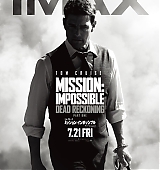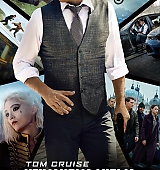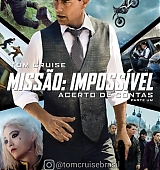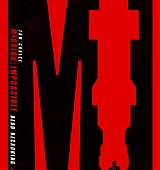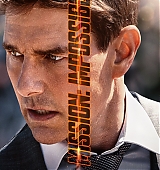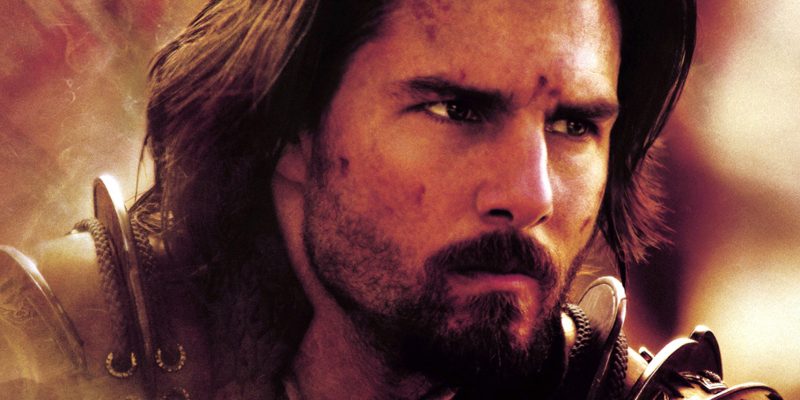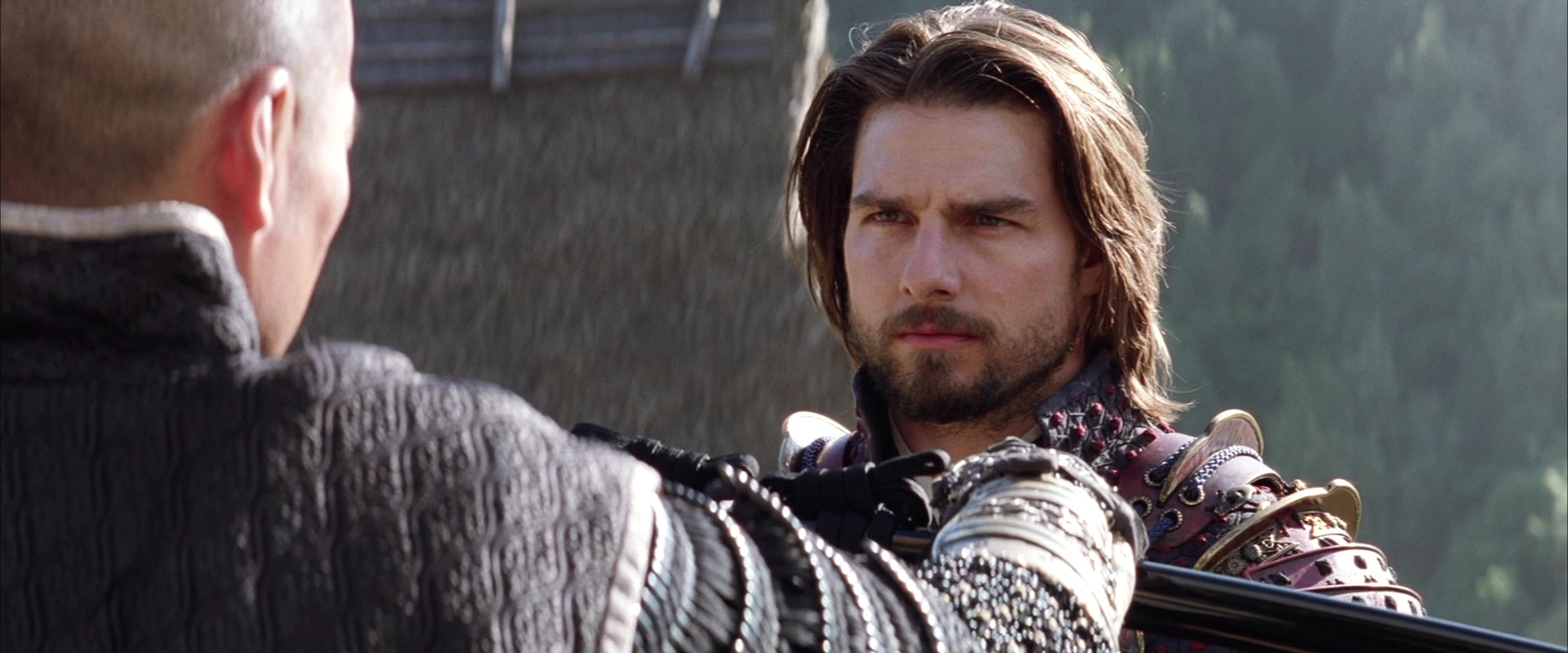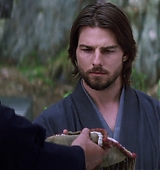Beautiful article by Jason Shomer for Collider.
Tom Cruise plays an American who winds up fighting alongside the Samurai. But how much of this story is based on real history?
When you see a movie poster that says that it’s “based on a true story,” it’s fairly understood that there are going to be at least some Hollywood changes made to the story, making the film not 100% historically accurate. However, before it was easy to research on the internet what was fact from fiction, it was tough to know whether you were watching an accurate history lesson or a blend of Hollywood and an encyclopedia. One film that left many moviegoers wondering was 2003’s The Last Samurai. Although this movie was constructed to resemble a first-hand account of Japan’s past, the truth was that plenty of it was created for entertainment purposes. This leads to the question of what was the real story behind The Last Samurai?
What Is ‘The Last Samurai’ About?
The depiction of the Samurai is nothing new in TV and film. This Edward Zwick-directed movie starred Tom Cruise as an American military officer who has been hired by the Japanese government to train their army to combat the rising rebellion led by a group of outcast Samurai warriors. These warriors fight to resist Japan’s rapidly growing modernization, which has been influenced by Western cultures. Cruise’s character, Captain Nathan Algren, is clearly there for a paycheck with no allegiance to the Japanese government whatsoever. In fact, Algren is facing his own demons with his involvement in the American Indian wars.
The leader of the Samurai warriors is Katsumoto (Ken Watanabe), a compassionate yet deadly swordsman who heads the rebellion. In the first battle between the Algren-led Japanese forces and the Samurai, the American leader defeats a prominent warrior, resulting in him avoiding execution when captured. However, during his time with the Samurai, Algren learns to not only respect and understand the reasons for this rebellion but also how to fight like a Japanese warrior. Eventually, he joins the rebels to fight alongside them against the Imperial army. All of this makes for a highly entertaining film, yet it only somewhat borrows from the actual events that occurred during that time period.
The Real Events That Led To War
History, as well as many old and new Samurai productions, has taught us that the Samurai are highly skilled warriors from Japan, emerging during the Heian period, which fell between the years of 794 to 1185 AD. Following a strict code of conduct and ethics called Bushido, the leading warrior faction at the time focused on loyalty, self-discipline, and especially honor. Contrary to what many might believe, the Samurai were not only swordsmen but also served as protectors and guards, possessing many other skills such as archery and horse riding. There is no doubt that the Samurai were a force to be reckoned with.
By the mid-1300s, the Samurai had become a well-established military elite culture separate from the commoners. They grew so powerful that they began to obtain political influence during Japan’s period of government instability. Somewhere between 1400 and 1600, known as the Sengoku period, the Samurai reached the peak of their political and physical strength, possessing significant influence over the country. Their will and discipline helped unify Japan and brought stability to the nation.
With this new stability, the Samurai became more involved in government and civil issues as battles became less frequent. The combination of politicians and Samurai brought in a period of more cultural and intellectual pursuits. However, in the late 19th century, Japan underwent rapid modernization under the influence of Western powers. The Samurai, intensely focused on preserving their culture and heritage, rejected this expansion and change, resulting in them becoming outcasts of rebellion and ultimately leading to the Boshin War. This type of conflict is nothing new, as there have been plenty of Japanese stories depicting wars and battles.
The Actual Man Who Influenced Tom Cruise’s Character
The story of The Last Samurai was fictionalized for the most part, but Tom Cruise’s character, Captain Nathan Algren, is based on a real person named Jules Brunet, who was involved in the Boshin War. The Boshin War took place between 1868 and 1869, and was a clash between the Japanese government and the Samurai rebellion. Brunet was brought to Japan (more like rented) to train and advise the Japanese national army to combat the Samurai. But this fact was not the only connection to the fictional character Cruise portrayed in The Last Samurai.
Much like other characters’ features in other Samurai films, there are often as many untruths as there are facts. For example, true is the fact that Brunet developed sympathy for the Samurai’s cause and eventually sided with them to fight against the imperial Japanese forces. Close to the epic conclusion of the film’s last stand, the real American military leader became part of the Battle of Hakodate, where the Samurai made their final resistance against their enemy forces. However, the fate of the character and the real-life person did not align. While at the end of The Last Samurai, Captain Algren ends up returning to America, Brunet decided to stay in Japan, got married, and continued his career as a military advisor to the then-fully established and modernized Japanese Imperial army.
Katsumoto Was Based On a True Samurai Leader
Of course, when telling the story of a country’s historical battle, there has to be two sides. As for the leader of the rebel force, Ken Watanabe portrayed the character Katsumoto, who held a significant role. And just like Tom Cruise’s character, this character was also fictionalized but based on a real Samurai warrior. Katsumoto can be directly linked to the iconic Japanese Samurai Saigō Takamori. Takamori strongly opposed and resisted the Japanese government’s sudden transition from traditional culture and feudalism to Western-like modernization. His vocal opposition caused a rift between the traditional faction and the Meiji government.
Like the character in the film, Takamori would not budge from his commitment to traditional Samurai culture, values, and an intense sense of honor. He and the rest of the rebels believed that preserving the core values of Japanese culture was paramount, even over the growing influence of foreign Western powers on the country’s government. In addition to these values, the Samurai possessed incredible skill in the art of war and the concept of Bushido.
The eventual demise of Takamori was portrayed at the end of The Last Samurai, with the leader fighting to the death to defend his people and what he believed in. However, in reality, the Samurai warrior was only injured, and the exact way he met his end remains unknown. Nevertheless, his principles and actions for the Samurai and their cause were significant enough to be passed down through history, eventually inspiring the fascinating character in the film.
‘The Last Samurai’ Was Overall Fairly Close to History
When comparing the real-life main characters of ‘The Last Samurai to actual history, it’s also interesting to examine the reality of the Japanese conflict itself. The Meiji Restoration, which occurred from roughly 1868 to 1912, marked the collapse of the Tokugawa Shogunate and the rise of imperial control under Emperor Meiji. The government, previously connected with the Samurai and their traditional values, was replaced by military rule focused on modernization.
With increasing Western influence in the Meiji Empire, the Samurai felt they had no choice but to separate and form a rebellion to reclaim their rapidly changing country. In contrast to what The Last Samurai portrayed, the clash between the government and the rebels lasted longer than a few uneven battles. Despite the noble efforts of the Samurai, they were eventually defeated by the Meiji Imperial forces, and the focus on modernization and industrial progress continued to shape Japan’s government.
As mentioned earlier, the character portrayed by Tom Cruise and the rest of the cast are fictionalized but are loosely based on actual historical figures. However, the real Samurai rebellion was much more complex than what The Last Samurai depicts. The rebels were not just warriors who broke away from the Japanese imperial government; they were also advocates for preserving the country’s centuries-old values and culture, resisting the Western-driven financial progress. Despite the historical inaccuracies, the film does a commendable job of presenting a condensed and to-the-point version of what happened during that time, making it more accessible for a general audience.
There’s Nothing Wrong With Fact Checking
Epic period films have been a staple in theaters for decades. Separating fact from fiction has become easier than ever with access to vast amounts of information on the Internet. Filmmakers can no longer simply present depictions of the past without disclaimers and comparisons between what’s true and what’s made up. When The Last Samurai was released in 2003, it fell somewhere in between the era before this type of public revelation and the present time when we can evaluate how accurately films like this one portray historical events.
Let’s face it, with TV, film, and even animation, Hollywood’s goal is to entertain and attract audiences. While many historically accurate Samurai-based pieces come in the form of documentaries and series, there is still a fascination with stories that blur the lines between fact and fiction, especially when exploring the history of different civilizations.The Last Samurai is the type of story that has been copied and reproduced in various ways over the decades in cinema. Now, with the luxury of the Internet and connections with other interested individuals, it’s fascinating to look back and examine the true story behind the film and how closely it aligns with historical events.
By revisiting the past and examining the accuracy of movies like The Last Samurai, we can gain a deeper upstanding for how history played out, and the challenges faced by different factions of societies during different country-wide changes. While the film may take creative liberties for the sake of storytelling and entertainment, it still manages to capture the essence of a captivating time in Japanese history.

